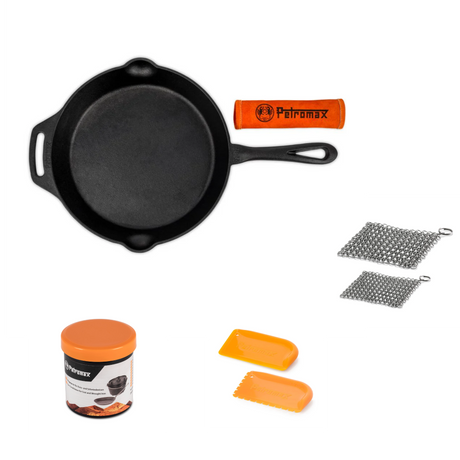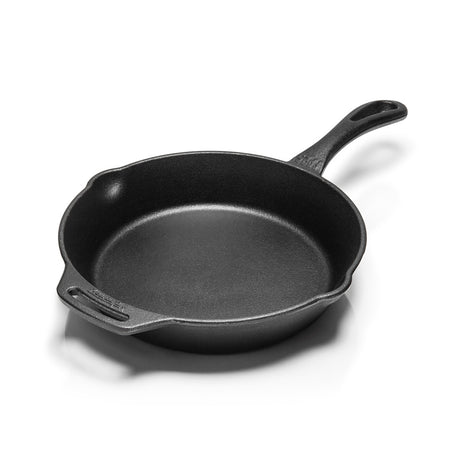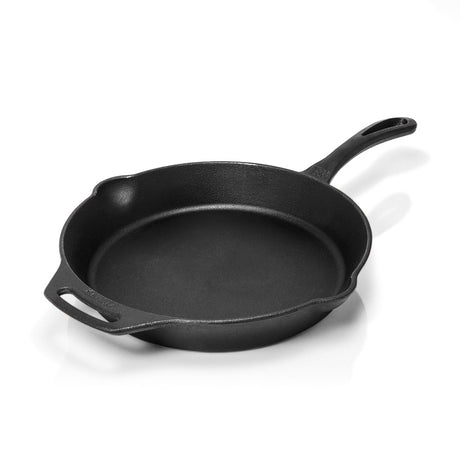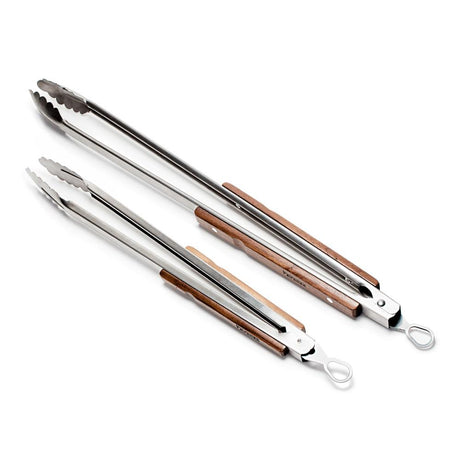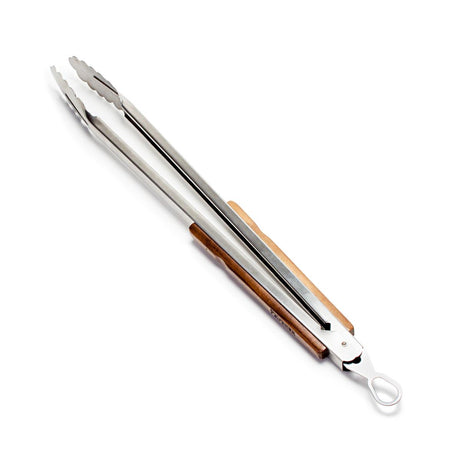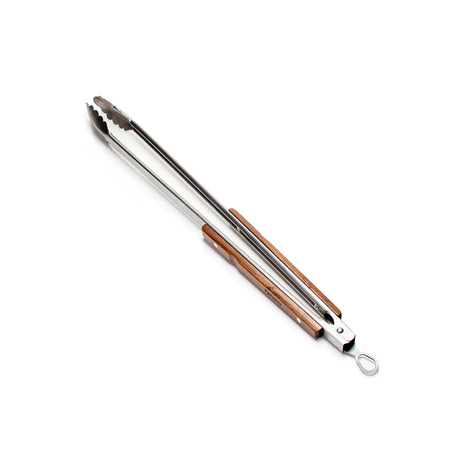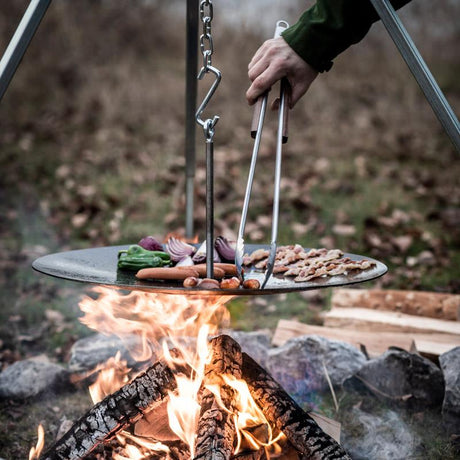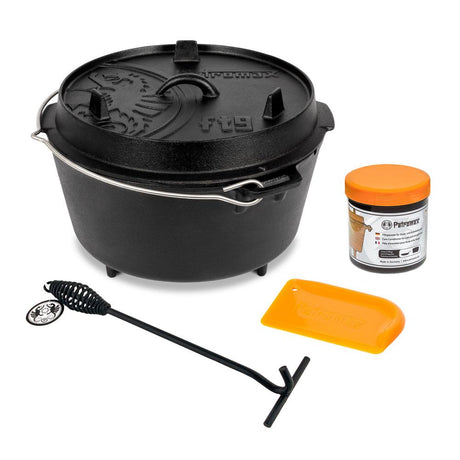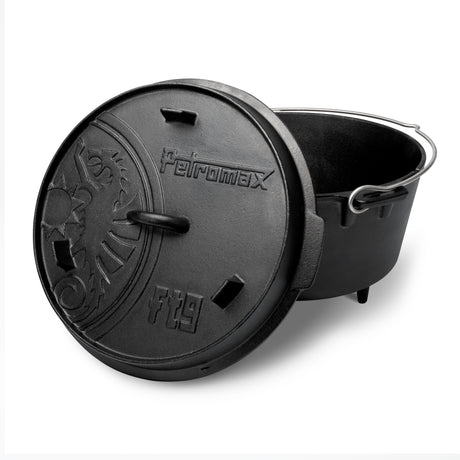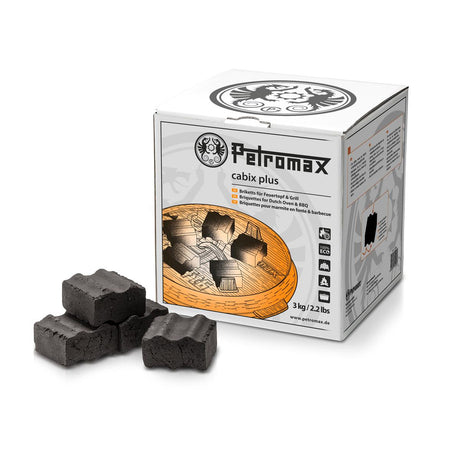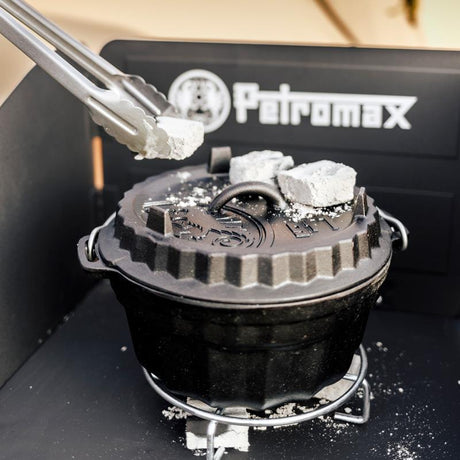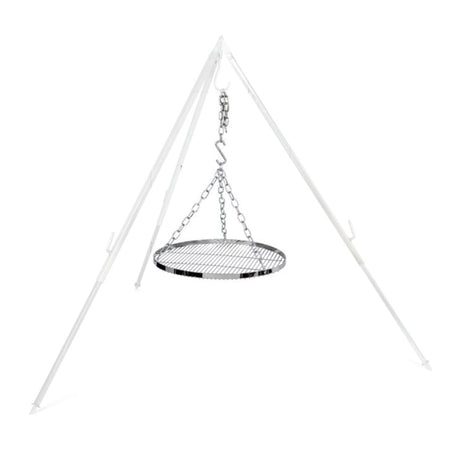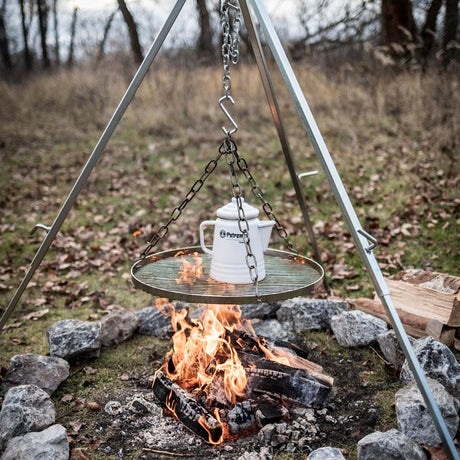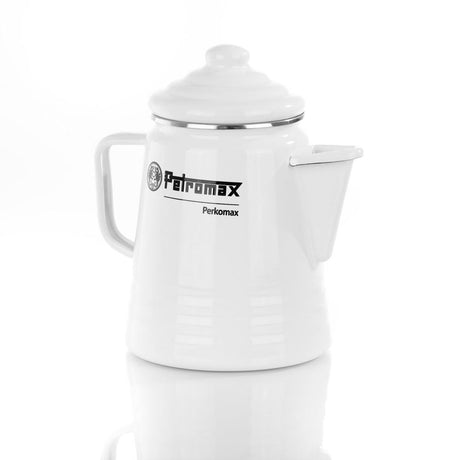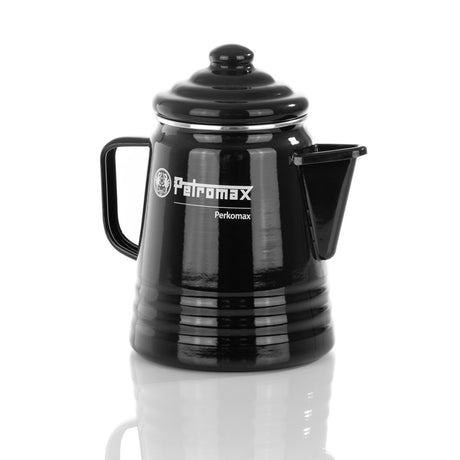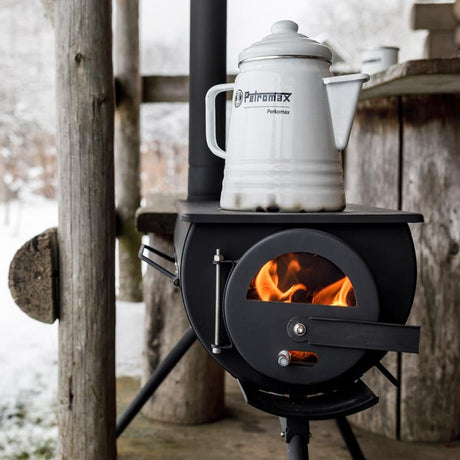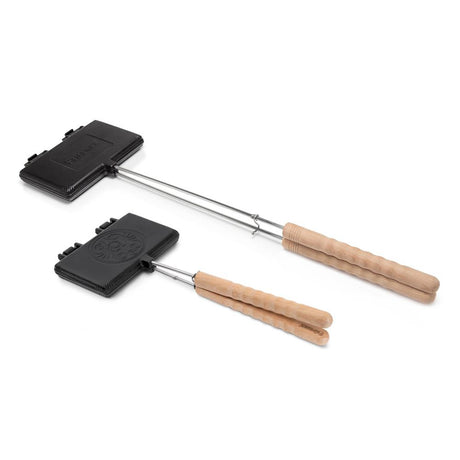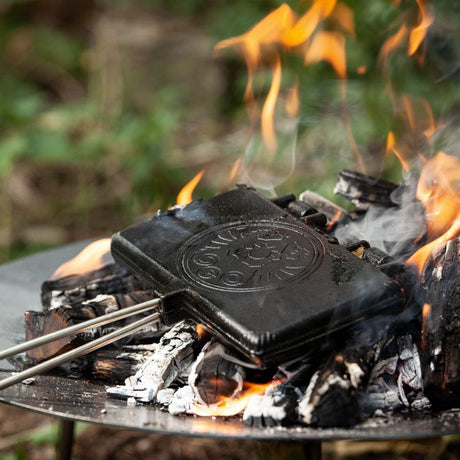Clean drinking water is essential for survival - but what can you do if your usual tap is not available? Whether camping, hiking or in emergency situations: The ability to make water from natural sources drinkable can be crucial. In this detailed guide, you will learn everything you need to know about different methods of water treatment and how you can safely obtain clean drinking water while on the move.
Where can I find water in nature?
The most important water treatment methods
Special situations
Safety tips and precautions
Conclusion: Preparation is the best protection
Why is water treatment so important?
The supply of clean drinking water is one of our most basic needs. While we can simply turn on the tap at home, nature presents us with greater challenges. Untreated water from natural sources poses significant health risks.
Your body can only go a few days without water. Even after a short time without sufficient hydration, your blood pressure will drop, dizziness will occur and your kidneys in particular will be under great strain. They are not only responsible for your water balance, but also for the vital detoxification of your body. A lack of clean drinking water can therefore quickly become critical.
Natural water often contains invisible dangers: Bacteria, viruses, parasites and chemical contaminants can cause serious illnesses, from diarrhea to kidney problems. Proper treatment is therefore not optional, but absolutely essential for your health.

Where can I find water in nature?
Finding water in nature requires attention and a basic understanding of natural processes. Nature offers us various clues that can lead us to valuable water sources like a kind of treasure map.
Waters above ground
The most obvious sources of water are, of course, streams, rivers, lakes and ponds. These are often easy to find, but are not always the safest choice. Flowing waters are generally preferable, as they are constantly renewed and offer fewer opportunities for pathogens to colonize. Mountain streams above human settlements are particularly promising.
Rainwater is one of the purest natural water sources. In areas with low levels of air pollution, you can even drink it without further treatment. Collecting dew in the early morning hours can also be a surprisingly abundant source of water. A clean cloth draped over dewy grass can absorb amazing amounts of water.
- Streams and rivers
- Lakes and ponds
- Rainwater
- Dew water (especially in the early morning hours)
Natural indications of water
Nature gives us numerous clues about the presence of water. The behavior of wildlife is particularly revealing:
Large mammals such as deer or wild boar leave clear tracks on their way to waterholes. These trails often lead downhill, as water naturally collects in depressions. If several animal trails converge, this often indicates an abundant water source.
Birds are also reliable indicators. Especially in the morning and evening hours, many species such as finches or pigeons fly specifically to watering holes. Pay attention to their flight paths - they are usually straight and low when they are heading for a watering hole.
The vegetation can also give you important clues. Lush, green plant growth indicates the presence of water nearby. Certain plants such as willows or reeds are typical indicators of water close to the surface.
- Animal tracks (especially of larger animals such as deer)
- Bird flight (especially in the morning and evening)
- Plant growth (lush, green vegetation)
- Terrain formations (valleys and depressions)
The most important methods of water treatment
The treatment of water is an art that combines different techniques. Each method has its advantages and disadvantages, and it is often the combination of several methods that provides the best result.

1. boiling - the classic method
Boiling is one of the oldest and most reliable methods of water treatment. Contrary to many myths, you don't have to boil the water for minutes - as soon as it comes to a bubbling boil, 99.999% of all pathogens have already been killed.
The process is very simple: bring the water to the boil and let it bubble briefly. The temperature of 100°C (at sea level) is more than sufficient, as most pathogens die at 70°C in less than a minute. At higher altitudes, where water boils at lower temperatures, you should extend the time slightly.
Note, however, that boiling does not remove chemical impurities or heavy metals. Nor does it improve the taste - on the contrary, boiled water can even taste a little bland. A combination with filter methods is therefore often advisable.
- Make water bubble once (100°C)
- 99.999% of all pathogens are killed at 70°C
- Boil for longer at high altitudes (from 1500m) due to the lower boiling point
- Energy efficient: longer boiling is not necessary
2. filtering - mechanical cleaning
Filtering is an effective method of mechanically removing dirt, particles and pathogens from water. Whether you use homemade filters or professional devices, the goal remains the same: to make water cleaner and safer.
Improvised filter
An improvised filter can help you in an emergency situation when a commercial water filter is not available. With a little skill and the right materials, you can quickly build an effective purification method:
- Plastic bottle as a base: cut off the top part of an empty plastic bottle - it serves as a funnel for your filter system.
-
Build up layers from bottom to top:
- Charcoal: Charcoal from a campfire is a natural filter and removes many impurities and odors. Break the charcoal into small pieces and fill them into the bottle.
- Sand: A layer of fine sand ensures that smaller particles are retained.
- Pebbles: Coarser pebbles filter out larger particles such as leaves and mud.
- Clean leaves: Place leaves or moss between the layers to increase filter efficiency.
- Application: Pour the water slowly through the filter. Repeat the process if necessary until the water looks clear. Note, however, that this filter does not completely remove pathogens such as bacteria and viruses - additional treatment (e.g. boiling) is advisable.
Commercial water filters
If you are regularly on the move, it is worth buying a commercial water filter. These devices are compact, efficient and specially designed to treat drinking water in the great outdoors. Depending on the model, they offer different advantages:
- Pore filters: these filters have tiny pores (ideal: maximum pore size of 0.2 microns) that reliably retain bacteria, protozoa and particles. They are particularly suitable for clear water from streams or rivers.
- Membrane filters: Even more efficient than pore filters, as they can also remove chemical impurities. They are ideal for areas where pollutants may be present in the water.
- Activated carbon filters: These filters are the best choice when it comes to improving the taste of the water. They not only remove pollutants, but also odors and an unpleasant aftertaste.

3. UV treatment - the natural alternative
UV treatment is a simple, inexpensive and environmentally friendly method of ridding water of pathogens. Especially in sunny regions, you can use the power of the sun to make the water safe to drink.
How UV treatment works
UV light destroys the DNA of bacteria, viruses and protozoa, preventing them from reproducing. For the method to be effective, the water must be clear, as cloudy water blocks the UV light.
Step-by-step instructions:
- Use a clear PET bottle: Fill a clean, clear PET bottle three-quarters full with water. PET bottles are particularly suitable as they allow UV rays to pass through.
- Shake the bottle: Shake the bottle to distribute oxygen in the water. The oxygen supports the disinfection process.
- Direct sunlight: Place the bottle in a place with direct sunlight and leave it in the sun for at least 6 hours.
- Extend the treatment time: If the sky is cloudy, increase the treatment time to 24 to 48 hours to ensure that the water absorbs sufficient UV light.
Important notes
- Only use clear water: Cloudy or dirty water should be filtered before UV treatment as suspended particles can block the UV rays.
- Check bottle material: The method works best with PET bottles. Glass bottles are less suitable as they allow less UV rays to pass through.
- Note the temperature: Although the method works at all temperatures, very cold water can slow down the process somewhat.
UV treatment is a particularly resource-saving alternative and ideal for regions with lots of sunshine. It is an excellent complement to other methods such as filtering or boiling and is particularly ideal for clear water sources.
4. chemical treatment
The chemical treatment of water is one of the most effective methods of killing pathogens such as bacteria, viruses and protozoa. With water purification tablets, you can produce clean drinking water quickly and easily - ideal for emergency situations or on the go.
Water purification tablets - how they work
Most water treatment tablets are based on chlorine or iodine, both of which are proven disinfectants. They work reliably against microorganisms and make the water safe to drink.
Advantages:
- Easy to use: The tablets are added directly to the water, dissolve quickly and start disinfecting immediately.
- Long shelf life: Due to their stability and durability, they are ideal for storage in emergency kits.
- Compact and lightweight: They fit in any pocket, making them perfect for camping, hiking or traveling.
Step-by-step application:
- Follow dosage: Read the instructions on the packaging and add the recommended number of tablets to the appropriate amount of water.
- Dissolve tablets: Wait until the tablet has completely dissolved. This usually only takes a few minutes.
- Contact time: Leave the water to stand for the specified time (usually 30 minutes) so that the chemical disinfection can be completed.
- Improve the taste: If you find the taste of the treated water unpleasant, you can neutralize it by adding vitamin C powder or a pinch of salt.
Tips for chemical water treatment
- Chlorine vs. iodine: Chlorine is more neutral in taste and is better suited for long-term applications, while iodine is usually only used for emergencies due to its intense taste.
- Not for cloudy water: Chemical tablets are less effective if the water is very dirty or cloudy. Filter it beforehand for best results.
- Pregnant women and children: The use of iodine tablets is not recommended for pregnant women and children - choose chlorine-based alternatives instead.
Chemical treatment is a quick and reliable method that should not be missing from any kit. Especially in situations where time or resources are scarce, water purification tablets offer an uncomplicated way to drink water safely.
Special situations
You won't always find clear water from rivers or lakes. Sometimes circumstances require special approaches - whether it's because only seawater is available or because you're traveling in extreme situations such as deserts or icy heights. We'll tell you how to get drinkable water even in the most difficult conditions and which methods can help you stay hydrated even in extraordinary situations.
Making seawater drinkable
The sea may seem like an inexhaustible source of water, but seawater is undrinkable for the human body without treatment - and even dangerous. The high salt content draws fluid from your body instead of hydrating it, and can lead to serious health problems in no time.
Why you should never drink untreated seawater
Seawater contains around 3.5% salt - far too much for your body to process. Drinking salt water causes your body to excrete more water than it takes in to get rid of the excess salt. This can lead to dehydration, kidney failure and, in the worst case, even death.
The solution: distillation
Distillation is necessary to make seawater drinkable. This process separates the salt from the water by evaporating it and then condensing the water vapor again. What remains is pure drinking water, while the salt is left behind.
This is how distillation works:
- Evaporation: Heat the seawater until it begins to evaporate. The salt remains behind as it does not evaporate.
- Condensation: Capture the water vapor and cool it down so that it becomes liquid water again.
Improvised distillation methods
Even without special equipment, you can distil seawater with a little creativity:
- Bowl method: fill a large bowl with seawater and place a smaller bowl in the middle. Cover the large bowl with plastic wrap and weigh down the center of the wrap with a stone. The sun heats the water, it evaporates and the condensed steam drips into the smaller bowl.
- Solar distiller: With a plastic sheet, a container and a collecting vessel, you can improvise a simple distillation system in the sun.
Important tips
- Note energy consumption: Distillation is effective but requires energy or sunlight - plan this resource carefully.
- No half measures: Partially desalinated water (e.g. by filtering alone) is still dangerous. Only complete distillation reliably removes the salt content.
The sea holds a valuable source of water, but without the right method it remains undrinkable. With distillation, however, you can obtain safe drinking water even in coastal regions or on the high seas.

Water extraction in extreme situations
If you find yourself in a life-threatening environment - be it the desert, the jungle or a remote, cold region - the ability to extract water from unconventional sources is crucial. It's all about using nature's resources wisely and employing creative techniques to access much-needed drinking water.
Setting up dew traps
On cool, damp nights, dew forms, which can be an important source of water. You can use dew traps to collect it effectively:
- Stretch a clean cloth or tarpaulin over plants or on the ground where dew settles.
- Wipe off the dew early in the morning and wring the water into a container.
- Alternatively, you can collect grass or leaves and extract the dew water from them.
Solar distillation
Solar distillation is a simple but effective method of obtaining water, especially in dry areas:
- Dig a hole in the ground and place moist plants or soil in it.
- Stretch a plastic sheet over it and weigh down the center of the sheet with a small stone to form a funnel.
- The sun heats the plants and soil, causing water to evaporate and condense on the plastic film. The droplets collect in the container under the stone.
Vegetation as a source of water
Many plants store water that you can use:
- Bamboo: Fresh bamboo canes often contain water, which you can extract by cutting and tilting the canes.
- Succulent plants: Cactus species or other succulents often contain water, although this sometimes needs to be treated.
- Roots and leaves: Some plant roots can be squeezed to extract water.
Use condensation on plastic film
In humid regions, you can extract water from the ambient air using plastic film:
- Stretch the film around lush plants or trees so that the leaves are in direct contact with the film.
- The heat from the sun causes water to evaporate from the leaves and condense on the inside of the film. You can then collect this.
Safety tips and precautions
Even if the water looks clear and clean, it can still be full of invisible dangers. Bacteria, viruses, parasites or chemical contaminants can be found in even the seemingly purest water sources and put your health at risk. Here are important safety tips that you should always follow to stay on the safe side.
Clear water is not always safe water
The appearance of water says nothing about its quality. Pathogens such as E. coli or Giardia are invisible to the naked eye and can lurk even in crystal-clear water. Therefore, never drink water from nature without treating it - no matter how clean it looks.
Combine different treatment methods
No single method offers one hundred percent protection. For maximum safety, it often makes sense to combine several techniques:
- Filtering and boiling: Filters remove coarse particles and microorganisms, while boiling kills viruses and bacteria.
- Filtering and chemical treatment: Use a filter to remove suspended particles and water treatment tablets to neutralize chemical impurities.

Treat rainwater in densely populated areas
Rainwater is considered one of the purest sources of water in remote, clean areas. In urban or heavily populated regions, however, it can be contaminated by air pollution. You should therefore always treat rainwater in such areas before drinking it.
When in doubt, always play it safe
If you're not sure whether the water is safe, it's better to treat it before you drink it. A cautious approach will protect you from serious illnesses, which can be particularly dangerous in a survival situation.
Summary of the most important precautions:
- Never drink untreated water from natural sources.
- Combine methods for the best possible safety.
- Treat rainwater in densely populated areas.
- When in doubt, always be careful and treat water prophylactically.
Conclusion: Preparation is the best protection
The ability to treat water is one of the most important skills when it comes to surviving outdoors or in emergency situations. With the right knowledge and equipment, you can obtain safe drinking water even in adverse conditions.
Familiarize yourself with the different methods of water purification and make sure you have the right equipment to hand - whether for your next outdoor trip or in an emergency. Preparation is the key to remaining capable of acting in any situation and protecting your health.
Note: This article is for general information. In emergency situations, you should always choose the safest method of water treatment available.
Nature will challenge you, but with the right survival tips you will be well prepared! Take a look at our other articles and learn how to stay safe in the wilderness:
From nature to your plate: edible wild herbs in spring
Interpreting weather signs correctly: How to read the language of nature
First aid kit for hiking: Your guide to greater safety on the trail
Bushcraft vs. survival: the ultimate comparison



